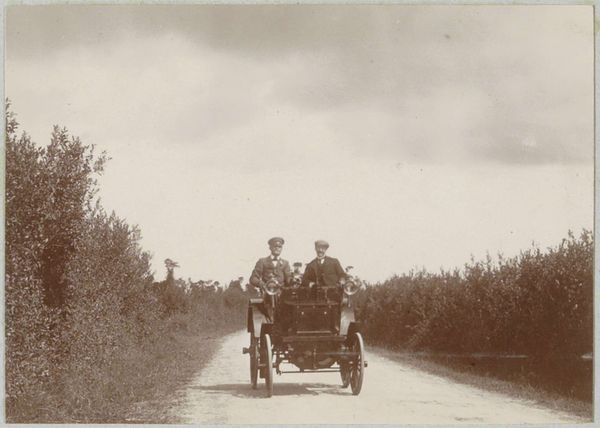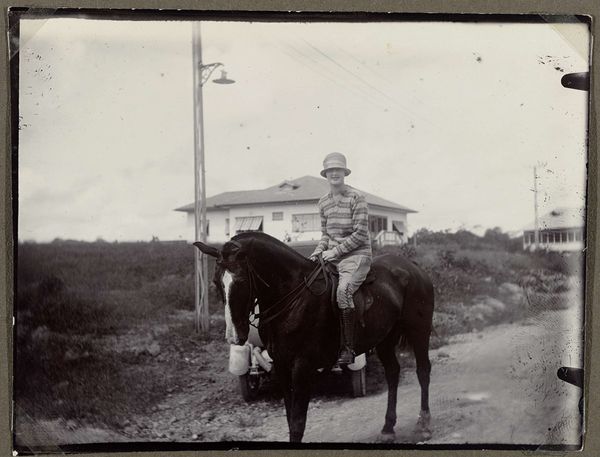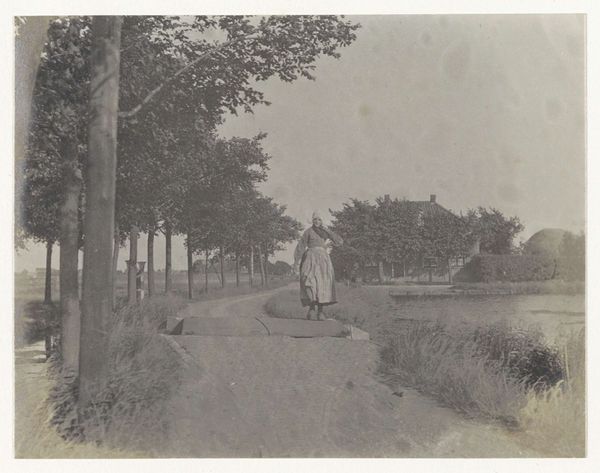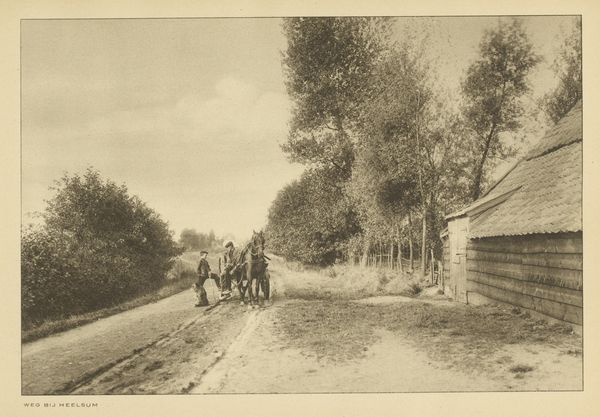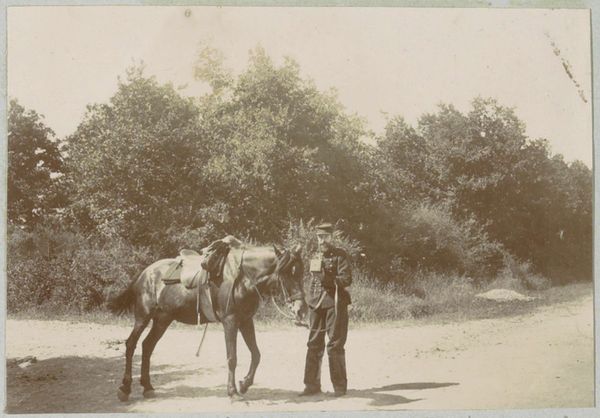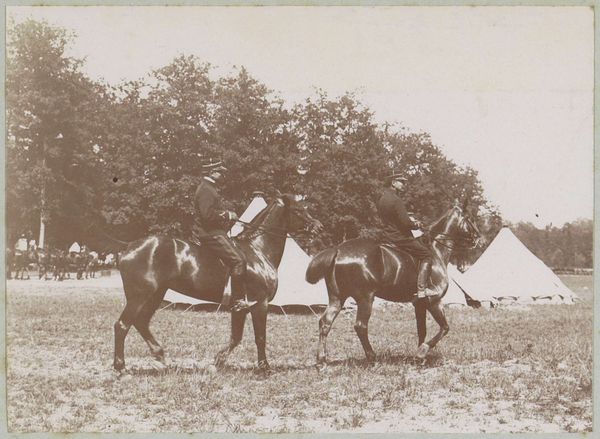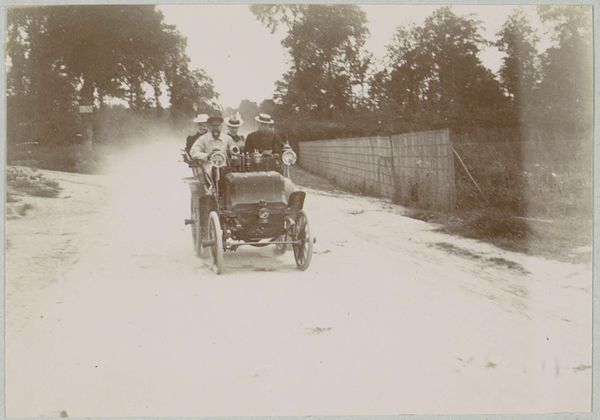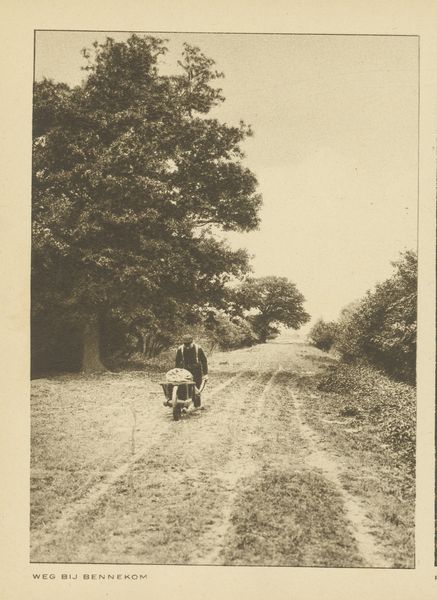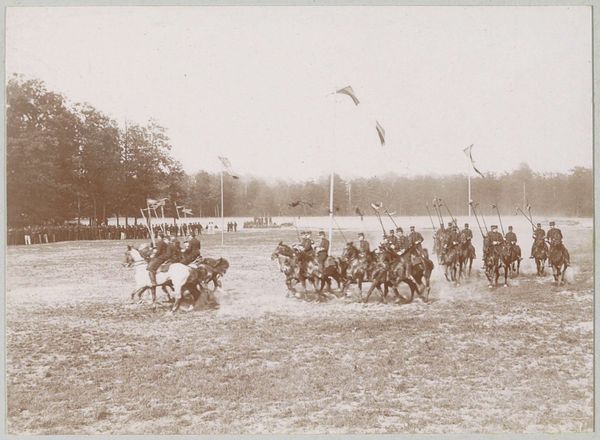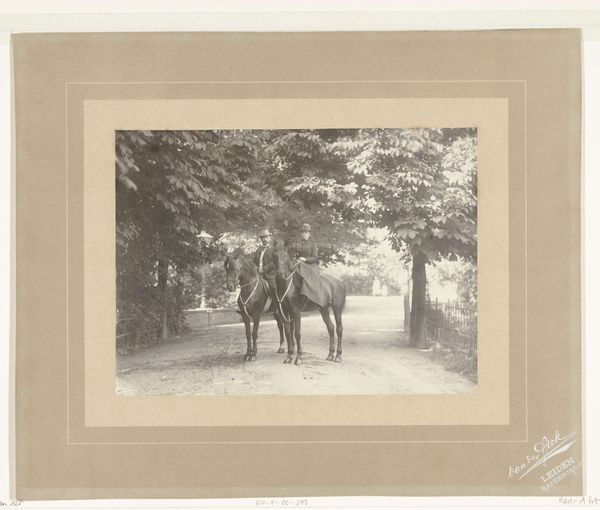
photography, gelatin-silver-print
#
portrait
#
landscape
#
outdoor photograph
#
photography
#
road
#
gelatin-silver-print
#
genre-painting
#
realism
Dimensions: height 51 mm, width 81 mm
Copyright: Rijks Museum: Open Domain
Editor: This photograph, "Geüniformeerde man te paard op een bospad, vermoedelijk bij Pontoise," which translates to "Uniformed man on horseback on a forest path, presumably near Pontoise," was created around 1897. It's a gelatin-silver print from the Rijksmuseum's collection. I'm struck by how the dusty road and muted tones create a sense of stillness, despite the horse appearing to be mid-gallop. What are your initial observations of its form? Curator: Formally, the photograph relies on a strong diagonal created by the road to lead the eye. The photographer uses the textural variations of the road, the horse, and the surrounding foliage to delineate space. Light, almost exclusively from the upper-left of the image, washes out fine details, which enhances the two-dimensionality of the picture. I notice how the tree line frames the rider, and, although the print is sepia-toned, we have tonal gradations that suggest form and movement. Is there any spatial tension? Editor: I can see how the road directs the eye. It gives the impression of recession, doesn't it? What about the use of light to shape the visual? Curator: Precisely. The photographer capitalizes on how light flattens and also reveals, particularly in how it renders the dust kicked up by the horse, momentarily solidifying its motion. In that same instant, we recognize its status as merely an image, a fleeting moment in a static object. The deep blacks of the horse and rider’s shadow, on the otherwise pale road, act to punctuate and accentuate their forward progress, thereby enhancing the composition’s thrust and trajectory. Are you persuaded that those techniques complement the other elements within the photo? Editor: Absolutely. Thinking about the light and shadow, I understand better now how they not only depict but also dramatize the sense of movement in the image. Curator: It’s also productive to recognize how the photographer emphasizes or suppresses details, and how those choices ultimately influence our understanding of the subject’s placement in this scene. Editor: Thank you; seeing how these elements are arranged and work together has offered me a deeper perspective.
Comments
No comments
Be the first to comment and join the conversation on the ultimate creative platform.
